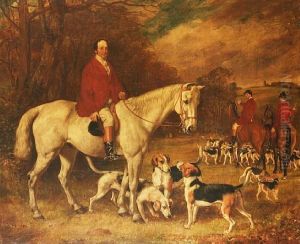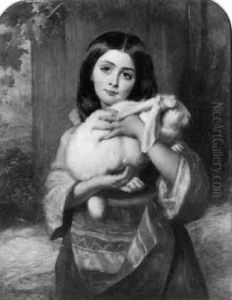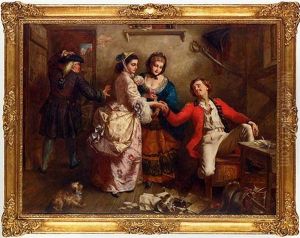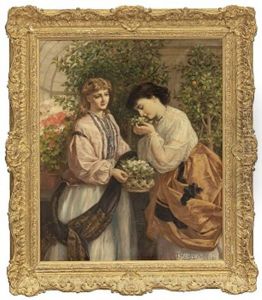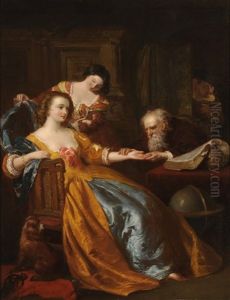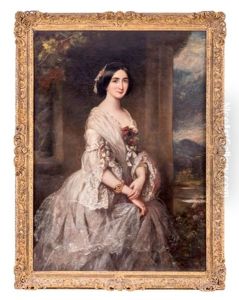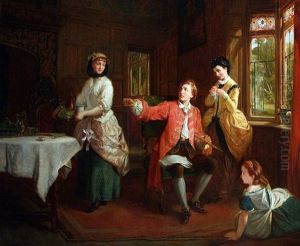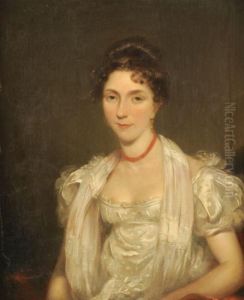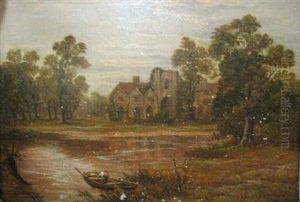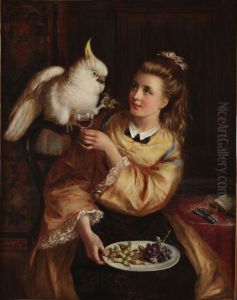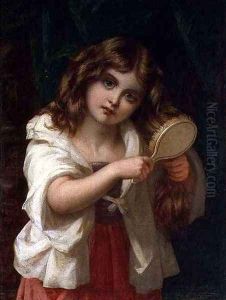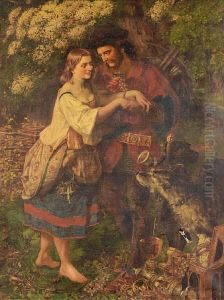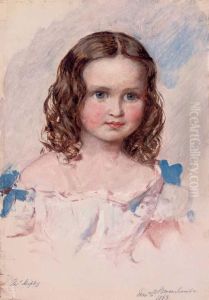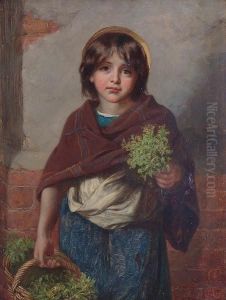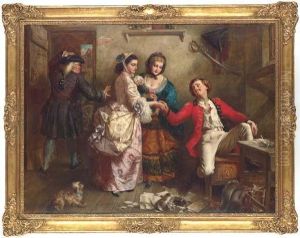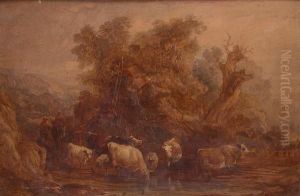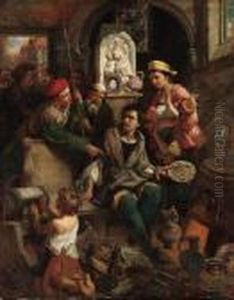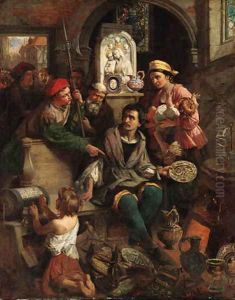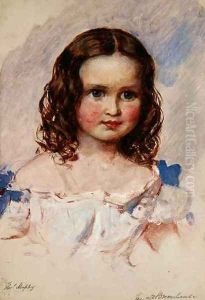Thomas Frank Heaphy Paintings
Thomas Frank Heaphy was an English portrait painter, born in 1813 in Westminster, London. He was the eldest son of Thomas Heaphy, the original water-colour painter to Queen Charlotte and a notable figure in English art in his own right. Growing up in a family deeply entrenched in the arts, Heaphy showed an early talent for painting, which was nurtured and developed from a young age.
Heaphy's career began in the realm of watercolor portraiture, following in his father's footsteps, but he eventually transitioned to oil painting, finding a more durable and expressive medium for his works. He exhibited his first piece at the Royal Academy at the tender age of just seventeen, marking the start of a prolific career that would span decades.
Throughout his life, Heaphy was known for his remarkable portrait work, capturing the likenesses of many notable figures of his time. His ability to depict the intricate details of his subjects' attire and the subtle expressions on their faces won him acclaim and a distinguished clientele, which included members of the British aristocracy and notable military figures.
Despite his success as a portraitist, Heaphy also explored other genres, including historical scenes and genre paintings, though these works did not garner the same level of recognition as his portrait work. His dedication to realism and meticulous attention to detail were characteristics that defined his artistic style throughout his career.
Thomas Frank Heaphy's contribution to English art was significant, though he has not been as widely remembered as some of his contemporaries. He died in 1873, leaving behind a legacy of detailed and expressive portraits that continue to be studied and admired for their technical skill and emotional depth. His works are held in various collections and museums, serving as a testament to his skill and dedication to the art of portraiture.
